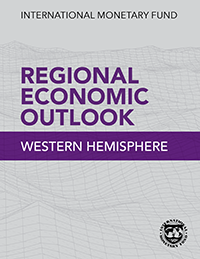At a Glance
- Current IMF membership: 191 countries
- Ecuador joined the Fund on December 28, 1945
- Quota: SDR 697.7 million
- Number of Arrangements since membership: 23
- Outstanding Purchases and Loans (SDR): 6650.07 million (December 31, 2024)
- Article IV/Country Report: December 19, 2024
- Most recent IMF Arrangement: Latest Report (December 19, 2024)
Office Activities
The IMF Resident Representative Office in Ecuador is composed of the Resident Representative and a local team: an economist, an office manager, a research analyst, and a driver.
The office follows economic developments and policies in Ecuador, liaises between the Ecuadorian authorities and IMF staff in Washington, and coordinates IMF technical assistance. It is also a source of information about IMF views for the public, local and foreign analysts, civil society organizations, investors, academic and research institutions, as well as Ecuador’s international partners and their diplomatic missions.
IMF's Work on Ecuador
-
December 19, 2024
The Executive Board of the International Monetary Fund (IMF) completed today the first review of the EFF arrangement for Ecuador and concluded the 2024 Article IV consultation.
-
December 19, 2024
Series:Country Report No. 2024/357
-
December 19, 2024
Series:Country Report No. 2024/358
-
December 9, 2024
IMF staff and the Ecuadorian authorities have reached staff-level agreement on the first review of the country’s EFF arrangement
-
Transcript of Western Hemisphere Economic Outlook October 2024 Press Briefing
October 25, 2024
Good morning. Welcome everyone. This is the press briefing for the Regional Economic Outlook for the Western Hemisphere. My name is Julie Ziegler, and I am with the Communications Department at the Fund. I'm going to introduce our panel today. To my immediate left is Rodrigo Valdes, who. the Director of the Western Hemisphere Department. And he is joined by his Deputies, Ana Corbacho and Luis Cubeddu.
Regional Economic Outlook

Western Hemisphere
Regional Economic Outlook
October 2024After successfully weathering a series of shocks, most countries in the region are converging to their (tepid) potential. Growth is expected to moderate in late 2024 and 2025 while inflation is projected to continue easing, although gradually.
With output and inflation gaps mostly closed but monetary policy still contractionary and public finances in need of strengthening, a further rebalancing of the policy mix is necessary. Fiscal consolidation should advance without delay to rebuild buffers while protecting priority public investment and social spending. This would support the normalization of monetary policy and strengthen credibility and resilience of policy frameworks.
Most central banks are well placed to proceed with monetary easing, striking a balance between fending off the risk of reemerging price pressures and avoiding an undue economic contraction.
Medium-term growth is expected to remain close to its low historical average, reflecting long-standing, unresolved challenges—including low investment and productivity growth—and shifting demographics. Worrisomely, the ongoing reform agenda is noticeably thin and could lead to a vicious circle of low growth, social discontent, and populist policies. Avoiding this requires pressing on with reforms. Improving governance—by strengthening the rule of law, enhancing government effectiveness, and tackling crime—is a priority that cuts across all areas of growth. Boosting capital accumulation requires improving the business environment, fostering competition, and increasing international trade. Greater and more effective public investment is also needed. Maintaining a dynamic labor force and increasing productivity requires tackling informality and making formal labor markets more flexible, including to adapt to new technologies. Increasing female labor participation can help boost the labor force and offset demographic shifts.
Read more: Regional Economic Outlook for the Western Hemisphere, October 2024



